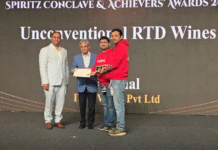
GEA has made a series of significant changes to its trusted Sanicip bag filtration system for food and dairy spray dryers in a long-term development project that will provide valuable operational benefits to users of the new equipment.
The new Sanicip II (patent pending) maintains and controls the pressure drop through the filtration bags more effectively by promoting longer production times and reducing CIP intervals, says Gea. Combined with other advances, such as easier maintenance and better space utilization than its predecessor, bag life is now up to 50% longer. These developments add to the more reliable operation, financial savings, and a better working environment for operators.
Following extensive studies with customers, Gea identified key areas where design modifications could be made in this new generation of Sanicip technology. Using the latest computational fluid dynamics (CFD) techniques to optimize airflow within the filter, Gea said that it was able to reduce the length of the filter bags from up to 7 meters to just 4.5 meters and, by reducing the diameter and increasing the number of bags within the filter chamber, retained the total filtration surface area of the system. This fundamental change results in increased practicality and efficiency while contributing several additional benefits:
Shorter filtration bags and cages
An internal cage structure supports each filtration bag. The 4.5-meter cages are much lighter in weight than their longer predecessors, making maintenance easier. Likewise, the shorter cages can be fabricated as a single piece, rather than joining two structures, allowing the cage to come more easily and more quickly into position. And its rigidity makes it more structurally sound. Gea has also made the fixing system for each cage obsolete, eliminating the need for loose bolts, nuts, and brackets, which were difficult and time consuming for engineers to handle during routine maintenance. The shorter filtration bags are exposed to less turbulence making them less prone to mechanical wear and extending their operational life by up to 50%.
Resilient dedusting system to better maintain pressure loss
Gea has also looked closely at the design of its dedusting system, essentially comprising super-sonic nozzles and rapid diaphragm valves. The system ensures the powder that builds upon the bags is pulsed down into the filter’s bottom. Using CFD techniques combined with full-scale testing has allowed Gea to make precise adjustments to the profile of the super-sonic nozzles and their position and the diaphragm valve design. According to Gea, this, combined with the shorter bags and the novel inlet system, ensures that the powder on the bags is carefully controlled and never exceeds the desired level. As a result, the need for frequent cleaning, which would otherwise seriously affect production schedules, is drastically reduced, and the pressure loss through the bags can be maintained indefinitely. The improved dedusting capability was already made available in more recent Sanicip models, and with these additional updates, it is now fitted as standard on the Sanicip II.
Adaptive layout featuring novel inlet solution
Gea made another important change by redesigning the inlet from the spray dryer, which is now vertical instead of horizontal. This facilitates a much more even distribution of air within the filter, reduces the footprint required, and allows for a more adaptive plant layout. Moreover, this adaptive layout may, in some instances, allow for lower building heights, thereby lowering capital investment, which can be substantial, particularly in areas with high regulatory cost and requirements, such as in earthquake-prone zones.
Operational benefits
Stig Møller Andersen, product manager for Gea in Copenhagen, states, “We listened carefully to our customers’ concerns and systematically addressed them in the new Sanicip II. The result is a bag filtration system that effectively supports the spray dryer while providing a wide range of operational benefits for the user.”
According to Gea, taken together, the optimization of the Sanicip II, compared with previous models, delivers a range of benefits for food and dairy powder processors. The most significant is the ability to control pressure loss across the filter bags, thereby extending production times and reducing CIP cycles’ need. The inlet ductwork is simple and compact, allowing the filter to be placed closer to the dryer. The shorter filtration bags experience less turbulence, so are less prone to mechanical wear. These modifications extend the bag’s operational life from 12 to 18 months or 12 CIP cycles – whichever comes first – providing substantial savings on maintenance costs and improved uptime. The reduced number of CIP cycles and lower costs for spare parts leads to an optimized total cost of ownership (TCO).
IndiFoodBev — authentic, impactful and influential
An English-language food and beverage processing and packaging industry B2B platform in print and web, IndiFoodBev is in its third year of publication. It is said that the Indian food and beverage industries represent approximately US$ 900 billion in revenues which implies more than 20% of the country’s GDP. Eliminating the wastage on the farmside can help to deliver more protein to a higher number of the population apart from generating sizable exports. The savings in soil, seeds, water, fertilizer, energy and ultimately food and nutrition could be the most immense contribution that country is poised to make to the moderation of climate change.
To improve your marketing and grow sales to the food and beverage processing and packaging industry, talk to us. Our research and consulting company IppStar [www.ippstar.org] can assess your potential and addressable markets in light of the competition. We can discuss marketing, communication, and sales strategies for market entry and growth.
Suppliers and service providers with a strategy and budget for targeted marketing can discuss using our hybrid print, web, video, and social media channels to create brand recognition linked to market relevance. Our technical writers are ready to meet you and your customers for content.
The second largest producer of fruit and vegetables in the world is continuously expanding processing capacities and delivery systems with appropriate innovative technologies. We cover product and consumer trends, nutrition, processing, research, equipment and packaging from farm to thali. Get our 2025 media kit and recalibrate your role in this dynamic market. Enhance your visibility and relevance to existing markets and turn potential customers into conversations. Ask for a sample copy of our bi-monthly in print or our weekly IndiFoodBev eZine each Wednesday.
For editorial info@ippgroup.in — for advertisement ads1@ippgroup.in and for subscriptions subscription@ippgroup.in
Naresh Khanna – 10 February 2025
Subscribe Now











